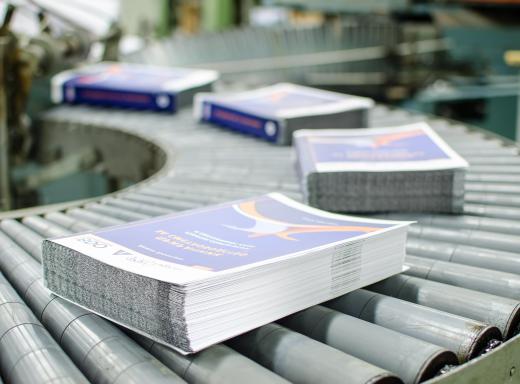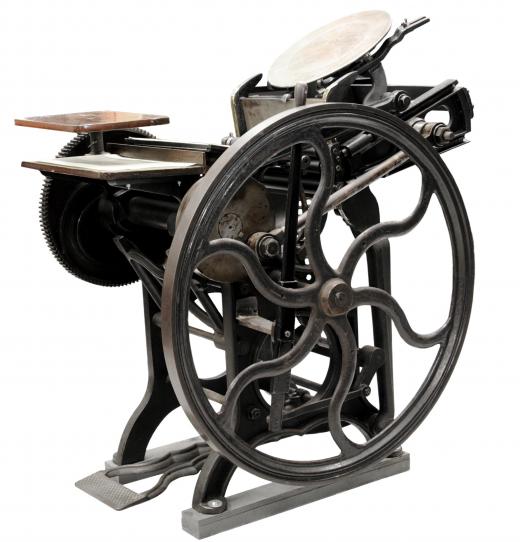Process printing is a printing technique widely used around the world. The name is actually a shortening of the four color printing process, a reference to the way in which images are prepared for the press. Process printing was developed in the early twentieth century along with offset printing, and overtook other printing methods such as letterpress in popularity by the 1950s. Process printing is cheap, rapid, and efficient, while yielding stunning images in mass production.
Most of the printed objects we interact with on a day to day basis are produced using the process printing technique. Glossy magazines, mailers, brochures, and other color printing projects are all produced using this method. Sometimes process printing will be combined with spot color printing, where inks are combined to create a specific color. Spot color is necessary for metallic inks and special color projects.

To prepare an image for process printing, it is separated into four color components: cyan, magenta, yellow, and key, also called black. The color separation is known as color screening, and is usually accomplished digitally. A separate print plate will be made for each color. Each plate is created as a halftone, meaning that the color is separated into a series of tiny dots. In areas where the color is sparse, the dots will be small and spaced well apart. In areas of color density, the dots will be larger, and may have no space in between them.

Each plate is printed separately and overlaid over the previously printed ink. When all four plates have been printed, the result is a color image. The small dots on each individual plate will come together to create a complete color image, although they can still be seen with the aid of a magnifying glass. If the plates are not properly aligned during the printing process, the result is a misregistered image which is blurry and illegible.
Process printing is an excellent tool, allowing printers to produce full color images very efficiently. Most printers learn process printing through apprenticeship, which allows them to work under an experienced printer for several years learning about all the stages of the process. Many small print shops perform all the tasks, from preparing the image to making the plates to printing, in-house. Other print companies may contract out the color separation and plate making to a processing house.
Ever since she began contributing to the site several years ago, Mary has embraced the exciting challenge of being a About Mechanics researcher and writer. Mary has a liberal arts degree from Goddard College and spends her free time reading, cooking, and exploring the great outdoors.

